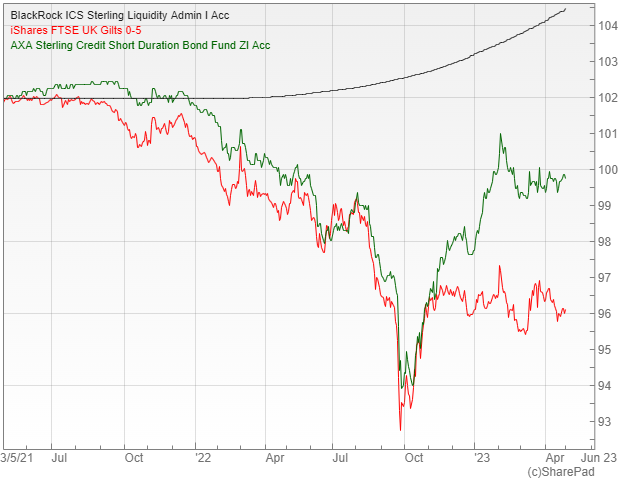Where To Park Your Cash

It’s a tricky time for investors at the moment with annual UK consumer price inflation still over 10%. This suggests that further interest rate rises are on the cards even though they could trigger a recession, which feels like a difficult backdrop for local share prices.
If you are nervous about the short-term prospects there are some decent low-risk places to park the cash in your ISA or SIPP to earn a decent yield while you wait. The potential returns are considerably higher than the interest your broker would pay you on any uninvested funds, although they are still significantly lower than inflation and you would also have to take into account the associated charges.
Rob Morgan, spokesperson and chief analyst at Charles Stanley, says that the Sterling Overnight Index Average (SONIA) is a little over four percent, which gives an indicative annual rate that investors can currently expect to accrue in a money market fund, though the level of return would respond quite quickly to movements up or down in the bank base rate.
Low Risk Alternatives To Cash
He suggests that one of the lower risk funds to consider is Blackrock ICS Sterling Liquidity (Premier Class), which comes with a competitive 0.10% annual management fee. Its main objective is the preservation of capital and liquidity through a portfolio of high-quality short-term money market instruments.
The portfolio invests primarily in first-tier securities, which include commercial paper, certificates of deposit, floating rate notes, time deposits and fully collateralised repurchase agreements. It is currently yielding around 4.2%.
Morgan says that for those wanting to take a little more risk, but potentially lock into an attractive return for longer, a short dated bond fund could be worth considering.
“They are less sensitive to inflation and interest rates than regular bond funds, but they are not immune. They still carry some duration and can therefore lose value, particularly in the event of a near term inflation spike.”
Short dated UK government bond yields in the region of four percent are potentially attractive if interest rates level off and start to go down. There is no sign of this happening at the moment, but it might be worth including the iShares UK Gilts 0-5 Year UCITS ETF (LON: IGLS) on a watch list to keep an eye on.

“High-quality, short-dated corporate bonds presently offer extra yield not only over government bonds, but also longer dated corporate credit,” says Morgan. “This creates an opportunity to add exposure to a low-volatility asset class at attractive yields at a time when the macroeconomic outlook remains very uncertain.”
For anyone interested in going down this route he suggests the AXA Sterling Credit Short Duration Bond Fund, which focuses on the higher-quality part of the investment grade universe. It invests at least 70% of the assets in sterling-denominated investment grade bonds with a bias towards shorter maturities, where the full repayment of the bond is expected to be less than five years.
Investing in short duration bonds reduces the negative impact of rising yields and means that the fund can be used as a first step out of cash to get a better return for a limited increase in risk. The manager believes that the outlook is the strongest it has been since inception with an underlying yield to maturity of over five percent.
If you are thinking of investing in the fund it is important to appreciate that the distribution yield is lower than this at just over two percent with the dividends paid quarterly. The ongoing charges are around 0.27%, depending on which share class you go for.
Comments (0)